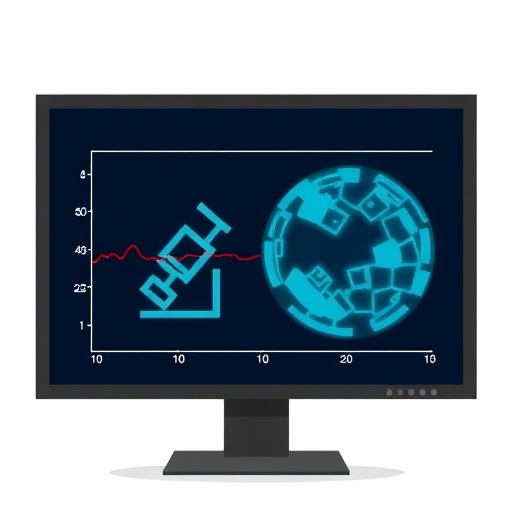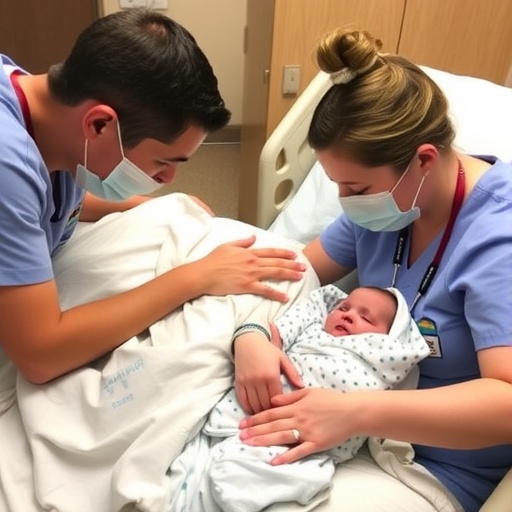
In the evolving field of forensic science, accurately determining the age of an individual from skeletal and dental remains plays a crucial role in legal and humanitarian contexts. Among the various methods employed for age estimation, the Demirjian staging system has gained widespread acceptance due to its structured approach to assessing dental development. Recent research has emerged evaluating the reproducibility and reliability of this method when applied by different forensic experts, highlighting both its strengths and the challenges inherent in its use.
The study in question takes a deep dive into the reproducibility and reliability of the Demirjian staging method for dental age estimation, bringing together the forensic expertise of eight professionals. Age estimation in forensic cases is often fraught with uncertainty, as biological variation, population differences, and examiner subjectivity can influence results. By rigorously analyzing how consistently multiple experts apply the Demirjian method, new insights have been gained into the method’s precision and reliability.
Demirjian’s method is based on the assessment of tooth calcification stages, which are categorized into clearly defined developmental phases. These stages are assigned numerical scores that can be translated into an estimated dental age. Originally developed for French-Canadian children in the 1970s, the system has been adapted and validated in multiple populations worldwide. However, the reliability of staging, particularly across different observers, remains a topic of ongoing scrutiny.
.adsslot_qURNQH73Yh{width:728px !important;height:90px !important;}
@media(max-width:1199px){ .adsslot_qURNQH73Yh{width:468px !important;height:60px !important;}
}
@media(max-width:767px){ .adsslot_qURNQH73Yh{width:320px !important;height:50px !important;}
}
ADVERTISEMENT
Inter-examiner variability is a major concern when using any morphological or radiographic assessment technique. The eight forensic experts participating in this research meticulously applied the Demirjian stages independently on the same set of dental radiographs. Their results were then statistically analyzed to evaluate agreement levels, with methodologies such as Cohen’s kappa coefficient or intraclass correlation coefficients typically employed to quantify reproducibility.
This comprehensive reliability assessment revealed nuanced findings. While overall consistency was deemed acceptable for certain tooth stages, discrepancies were noted in transitional phases, where calcification characteristics are less distinctly defined. Such ambiguities can lead to variability in assigning stage classifications, highlighting potential areas where method guidelines might require refinement or further standardization.
The implications of these findings extend beyond academic interest and hit directly at the operational heart of forensic investigations. High reproducibility and reliability are essential not only for producing trustworthy age estimates but also for ensuring judicial processes rest on sound scientific evidence. Errors or inconsistencies in age determination can have profound consequences, from immigration cases and age disputes to criminal responsibility evaluations.
Beyond methodological accuracy, the study underscores the role of examiner training and experience in minimizing errors. The eight forensic experts involved represented a spectrum of backgrounds and proficiency, illuminating how familiarity with subtle dental development markers can affect staging decisions. This suggests that alongside refining the Demirjian system itself, consistent training protocols are vital to improve homogeneity in forensic age assessments.
Moreover, the research draws attention to the need for population-specific calibrations. Since dental development may vary due to genetic, environmental, and socio-economic factors, the Demirjian scores derived from one demographic may not be directly extrapolated to another without adjustment. The study encourages the forensic community to consider these population differences when applying dental age estimation methods globally.
Technological advancements in imaging, such as improvements in digital radiography resolution and automated image analysis, hold promise for enhancing staging accuracy. Incorporation of artificial intelligence and machine learning algorithms could potentially reduce subjective biases intrinsic to human examiners. However, the study’s findings reinforce that even with advanced tools, human expertise remains indispensable in interpreting complex developmental patterns.
The evaluation also places the Demirjian method in context relative to other dental age estimation techniques, such as the Willems method, Cameriere’s open-apex method, and the Gleiser and Hunt system. Each technique has distinct advantages and limitations, and understanding reproducibility helps forensic experts choose the most appropriate tool for specific case scenarios.
Importantly, this research contributes a framework for future studies aiming to benchmark and enhance forensic age estimation protocols. The detailed statistical approach and multi-expert design serve as a methodological template for similar investigations. It also opens avenues for exploring hybrid approaches combining dental metrics with skeletal and biochemical markers to improve overall age estimation reliability.
Transparency in forensic methodologies is critical, especially given the increasing scrutiny of forensic evidence in legal arenas. This study’s detailed evaluation of the Demirjian system helps build confidence in dental age estimation by openly addressing areas where reproducibility may falter and proposing practical steps toward improvement.
As forensic science continues to intersect with technology and international application, such foundational research ensures that the methods used remain scientifically robust and legally defensible. The Demirjian staging method’s popularity owes much to its systematic nature and relative ease of use, and with ongoing refinement inspired by studies like this, it will maintain its position as a key forensic tool well into the future.
Ultimately, the research underlines a fundamental truth in forensic age estimation: while biological processes are universal, their interpretations are often complex and require continuous evaluation. The combined insights from expert forensic examiners enrich the collective understanding of dental development and age estimation, strengthening both scientific practice and societal trust.
In an era where legal disputes increasingly rely on forensic evidence as pivotal components, assuring that dental age estimation methods like Demirjian’s are reproducible and reliable across practitioners is not merely academic—it is essential for justice and human dignity.
Subject of Research: Reproducibility and reliability of the Demirjian staging method for dental age estimation among forensic experts.
Article Title: Evaluation of Demirjian staging method reproducibility and reliability for dental age estimation between eight forensic experts.
Article References:
Merdietio Boedi, R., Angelakopoulos, N., Franco, A. et al. Evaluation of Demirjian staging method reproducibility and reliability for dental age estimation between eight forensic experts. Int J Legal Med (2025). https://doi.org/10.1007/s00414-025-03560-9
Image Credits: AI Generated
Tags: biological variation in age estimationDemirjian staging system reliabilitydental age estimation methodsforensic age estimationforensic expert analysishumanitarian applications of forensic sciencelegal implications of age estimationpopulation differences in dental developmentreproducibility in forensic scienceskeletal age determination techniquessubjectivity in forensic evaluationstooth calcification stages assessment





